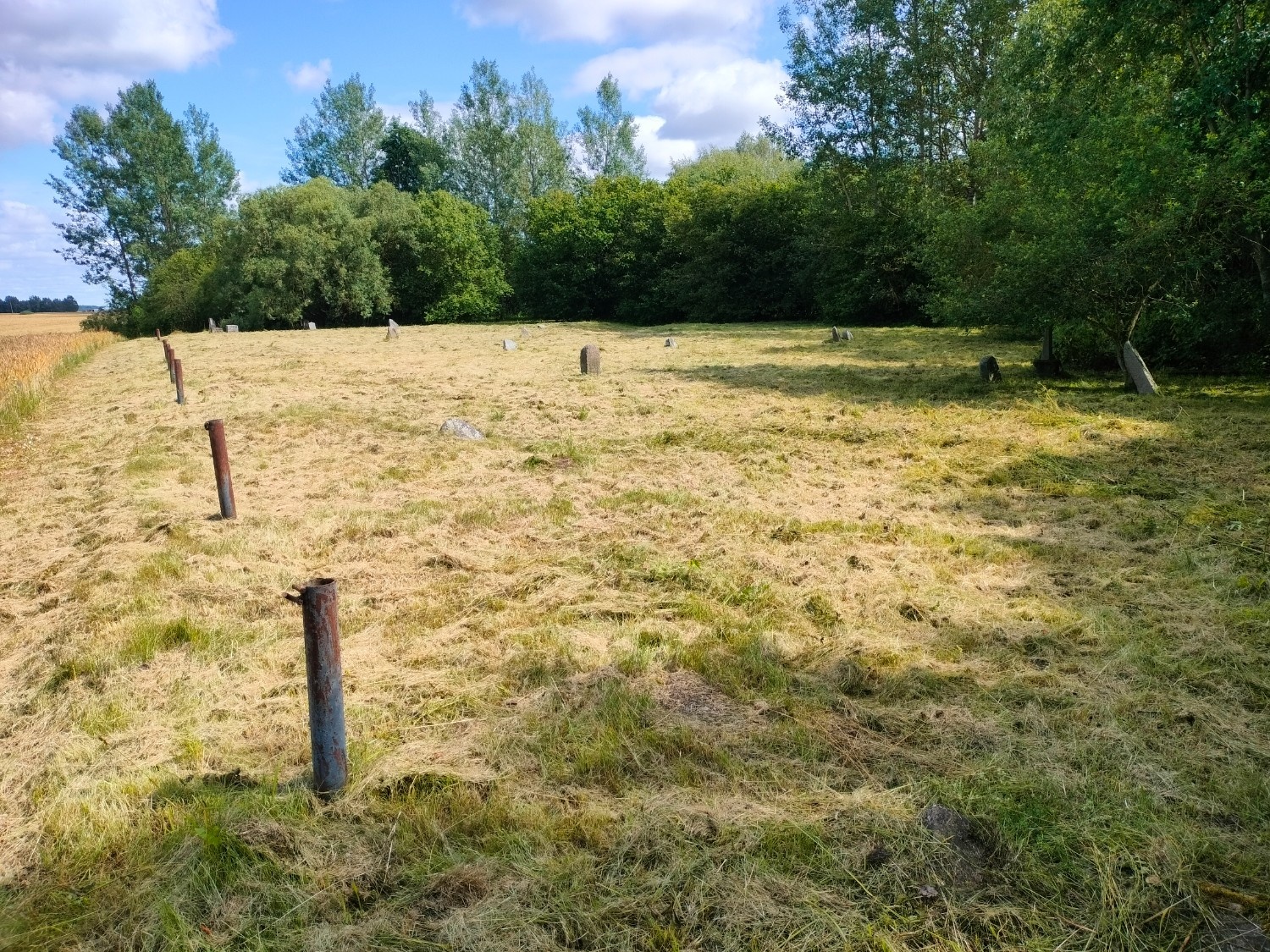Vilkija

A Historical Overview
Jewish settlement in Čekiškė, a small town in central Lithuania, began in the 18th century. By the late 19th century, the community had firmly established itself, with a synagogue, a mikveh (ritual bath), and chederim (religious elementary schools) serving the population. This foundation supported a robust, traditional Jewish life for generations, making the Jews the predominant cultural and economic group in the town for over a hundred years.
Economic Life: Commerce, Crafts, and a Market Town
The Jews of Čekiškė were primarily merchants, shopkeepers, and artisans. The town's status as a local commercial center was defined by its lively market square, where Jewish traders sold agricultural goods, textiles, and hardware. Jewish craftsmen, including tailors, shoemakers, and blacksmiths, provided essential services to the town and surrounding agricultural communities. This commercial vitality made the Jewish community the engine of the local economy until the early 20th century.
The Turbulent Early 20th Century and Emigration
The first major disruptions to Jewish life in Čekiškė came with World War I and the subsequent wars for Lithuanian independence. The town suffered from the passage of various armies, leading to economic hardship and violence. These events, combined with the broader trends of urbanization and opportunities abroad, triggered a wave of emigration. Many Jews from Čekiškė left for South Africa, the United States, and major cities like Kaunas and Vilnius, leading to a gradual decline in the community's numbers in the interwar period.
Demographic Shifts and Interwar Challenges
At its peak around 1900, Jews constituted approximately 80% of Čekiškė's population. However, by the 1930s, their numbers had significantly dwindled. Emigration, economic pressures, and the growing nationalist sentiments in independent Lithuania contributed to this decline. Despite these challenges, the community maintained its religious and cultural institutions, including active Zionist organizations that prepared youth for emigration to Israel.
Soviet Annexation and the End of Community Autonomy
In 1940, the Soviet Union annexed Lithuania and began a swift process of sovietization. In Čekiškė, this meant the nationalization of Jewish owned businesses and shops. All forms of Zionist and Hebrew cultural activities were banned and driven underground. This period marked the abrupt end of the community's autonomy and the suppression of the religious and cultural life that had defined it for centuries.
The Holocaust and the Annihilation of Čekiškė's Jews
The German invasion of the Soviet Union in June 1941 brought catastrophe. Čekiškė was occupied within days, and the persecution of its Jewish residents began immediately, aided by local Lithuanian collaborators. In August 1941, the Jewish population was forced into a sealed ghetto. That same month, the entire Jewish community of Čekiškė men, women, and children was marched to the nearby Kaziukai Forest and systematically murdered in a mass execution. This atrocity utterly obliterated the centuries old Jewish presence in the town.
Aftermath: A Community Remembered
The Red Army liberated Čekiškė in the summer of 1944, but there was no Jewish community to reclaim its homes or rebuild its institutions. No Jews returned to resettle after the war. Today, the story of Čekiškė's Jews is memorialized at the massacre site in Kaziukai Forest, where a monument stands in their memory.
Conclusion
The Jewish community of Čekiškė evolved from a vibrant and dominant force in the town's life to a target of persecution and, ultimately, complete annihilation. Its history reflects the classic pattern of a Lithuanian shtetl: a self sufficient community rooted in faith and commerce, which was eroded by emigration and geopolitics before being brutally destroyed during the Holocaust. While Jewish life in Čekiškė is now a memory, its story remains an integral part of the town's history.
Sources and References:
· YadVashem: Central Database of Shoah Victims' Names andhistorical accounts of the massacres in the Kaunas region.
· The Pinkas HaKehillot Lita: The Encyclopedia of Jewish Communities,Lithuania, provides a detailed entry on Čekiškė's founding, institutions, and ultimate fate.
· United States Holocaust Memorial Museum: Archives containing photographs and testimonies related to the destruction of Jewish communities in central Lithuania.
· Lithuania's State Archives: Documentation on population statistics and the sovietization of small towns in 1940-1941.
· JewishGen: Databases containing vital records, family histories, and memorials for Čekiškė.
